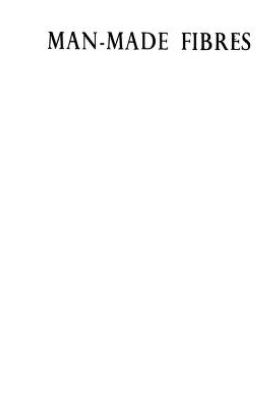‘Man Made Fibers’ PDF Quick download link is given at the bottom of this article. You can see the PDF demo, size of the PDF, page numbers, and direct download Free PDF of ‘Man Made Fiber’ using the download button.
Man-Made Fibers Book PDF Free Download

Man-Made Fibers
FUNDAMENTAL CONCEPTIONS
ALL ordinary years, either man-made or natural, consist of a number of fibres or filaments.
In the case of man-made fibres, this number is usually in the range 15-100-4.e., most yarns will be composed of not fewer than fifteen and not more than 100 filaments.
If a single thread of a man-made fibre yarn is broken, the individual filaments will usually be observed to splay out. They can always be pulled apart mechanically.
The reason this multi-filament construction is adopted is that it confers pliability and flexibility on the yarn; a yarn composed of a number of fine filaments is much more flexible than a solid.
The thick filament of the same diameter as the yarn. The use of a large number of very fine copper wires in ordinary lighting-flex may be recalled as an analogy. The purpose is exactly the same: to obtain flexibility.
Monofils For special purposes, monofilament yarns are made.
One familiar application of this is when the monofilament is relatively thick and is used as a bristle.
Most readers will be familiar with the use of nylon bristles in toothbrushes.
Very strong synthetic fibres, such as nylon, are sometimes spun in very fine monofils to give the sheerest of stockings, and such fine yarns of 7, 12 and 15 deniers are usually monofils.
They are made as monofils to give durability because coarse filaments are less easily damaged than fine, and as the monofil is itself so thin it is sufficiently pliable to be knitted without difficulty.
Are lower than those of 3 filament 15 deniers (each filament being of 5 deniers) nylon. This is illustrated in the figures on p. 1021.
Sometimes, too, for special decorative or novelty effects, relatively thick monofilament yarns may be used, but the great majority of artificial-fibre yarns are spun in multi-filament form.
Continuous Filament All the yarns that have just been discussed, multi-filament and monofil, are continuous filament yarns and are like real silk in the sense that the filaments are very long indeed, miles long
| Author | R W Moncrieff |
| Language | English |
| Pages | 1063 |
| PDF Size | 74.6 MB |
| Category | Literature |
Man-Made Fibers Book PDF Free Download
